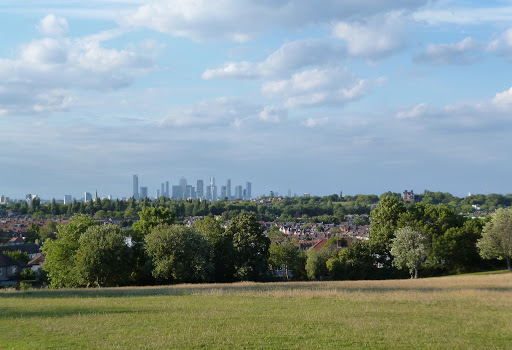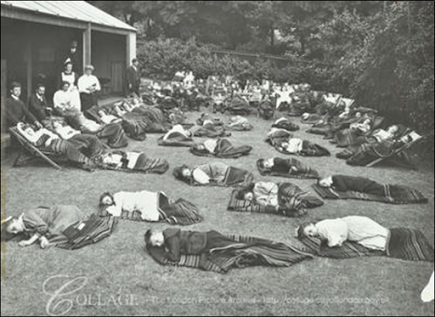Wesley Shaw, the Horniman Gardens’ Head of Horticulture, was interviewed by Quetta Kaye, chair of Forest Hill Society’s Environment Committee.
QK: Congratulations on keeping the Gardens open to the public throughout the lockdown and initiating new planting schemes. How did you manage this?
WS: We have all been really pleased with the Gardens this year. As you say, everything looks lovely and all credit should go to the Gardens’ team who have really done a great job. When the lockdown was introduced my team were designated Key Workers to enable the Gardens to remain open and provide a place for the local community to exercise in. To safely do this we split everyone into separate teams and each team worked alternate days. Unfortunately, this meant we weren’t able to provide cover into the evening, so we temporarily reduced the closing time to 4.30pm.
QK: Since you became Head Gardener 7 years ago, you have altered or created new planted areas in the Gardens. Where does the inspiration come from?
WS: My brief is to try and create displays that complement the Museum’s collections and temporary exhibitions as well as keeping all the amenity areas looking good. We try and do at least one ‘pop-up garden’ each year. The ideas usually come from myself and the team, and I then present them to the senior management team.
This gives us a great opportunity to do some interesting and innovative horticulture. Last year we used the Brick Wonders exhibition as inspiration for the summer bedding display in the Sunken Garden and created a modernist version of a bedding scheme using blocks of colour to represent Lego bricks. Visually it made a big impact and even got a full-colour spread in The Times and The Daily Telegraph.
Our last big project was to create the Grassland Garden in conjunction with the landscape designer Professor James Hitchmough and the plantsman Neil Lucas. This was intended to complement the new World Gallery that opened in the Museum in 2018. The idea was to celebrate grassland habitats and the relationship indigenous people have with them, as well as providing a beautiful long-lasting floral display that is low maintenance and great for wildlife.
QK: The newly installed bee-friendly garden at the front of the Museum is particularly apt, as is the pollution-absorbing sculpture. Where did this idea come from and how long has it taken to create and install?
WS: The area that is now the Bee Garden has been given over to wildflowers in recent years, but we decided to step it up and create a garden dedicated to supporting bees.
The inspiration for a bee garden came after our CEO Nick Merriman declared a climate and ecological emergency. We wanted to build a garden that would really benefit wildlife, particularly bees, and to hopefully provide some inspiration to visitors about how they can create something similar in their own gardens.
Coincidentally around that time I met local artist Dr Jasmine Pradissitto. Jasmine was really keen to exhibit some of her work in the Gardens, so I told her about our plans for a bee garden. This worked perfectly as she has been sculpting with a material called NoxTek that removes harmful respiratory NOx pollutants from the atmosphere. NOx is thought to interfere with the ability of bees to find and pollinate flowers. It’s a great example of how public art can not only drive awareness but also create a beneficial intervention which is fitting for the ‘Culture Declares’ mission statement of increased sustainability and protection for the environment and the biodiverse creatures that need it to survive.
The garden is really quite simple: we have a series of hexagonal raised beds planted full of bee-loving plants, surrounded by meadow turf and two rather marvellous bee hotels created by my team. Jasmine’s sculpture takes centre stage in the raised beds as a focal point for the whole display.
Lockdown made it a bit tricky getting materials and plants, but we managed to get everything we needed and by mid-May we were finished and Flower Girl was installed. It looks great and, more importantly, it is absolutely crawling with bees! If you haven’t seen it, you really need to!
QK: Did you come to the Horniman Gardens with preconceived ideas of what you would like to do, or have ideas evolved around the landscape and the educational aspects involved?
WS: A bit of both really. I started shortly after the Heritage Lottery-funded redevelopment was finished in 2012. There were a few areas that hadn’t been completely finished and other areas that still needed improving, so over the last seven years we have been working our way through these, as well as trying to create pop-up gardens at the same time. But there’s always something that needs improving or changing, which is a good thing because it means the Garden continues to evolve and improve.
QK: Without revealing any secrets, is there a budget for planting in the Gardens? By which I mean, how strictly are you constrained financially in what you are able to do?
WS: There isn’t a budget purely for planting. I have a budget that covers all operational elements of the Gardens, and plants are included in that. We are obviously constrained by what money is available. Our pop-up gardens are built on a relatively low budget, but the advantage I have is that I have a very skilled team, which means we can do a lot of things in-house. For example, the hexagonal timber beds used in the Bee Garden were built on-site, so this saved us a lot of money.
For bigger projects we have an excellent fundraising team who will help us fund projects. For example, the Prehistoric Garden was partly funded by Tesco’s Bags for Life scheme.
QK: In addition to the flower-planted areas, the Horniman Gardens is home to an enormous number of mature and some newer trees which must need regular monitoring and appropriate care. This is a very important legacy to have inherited. How is this managed?
WS: We really love our trees, and the Horniman has a fantastic collection, but, as you say, many of them are mature and entering the later stages of their life so we have been really proactive at planting the ‘next generation’ that will continue the Horniman tree legacy.
We try and plant trees that are quite unusual and aren’t generally seen outside a botanic garden or arboretum. It is important to provide good aftercare especially through a hot dry summer, so you will regularly see my team out with a water bowser watering all the young trees and weeding tree circles to prevent competition from weeds and grass.
All our trees are risk-assessed every two years by an independent tree expert, who gives me a prioritised list of works for our tree surgeon contractor to carry out. This keeps them safe and healthy.
QK: Congratulations on creating an exciting educational and pleasure garden — an inspiration to us all!


















